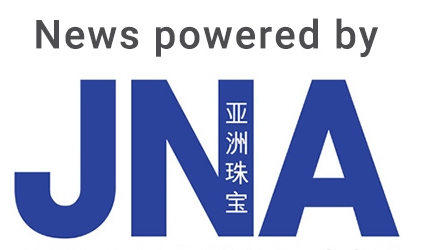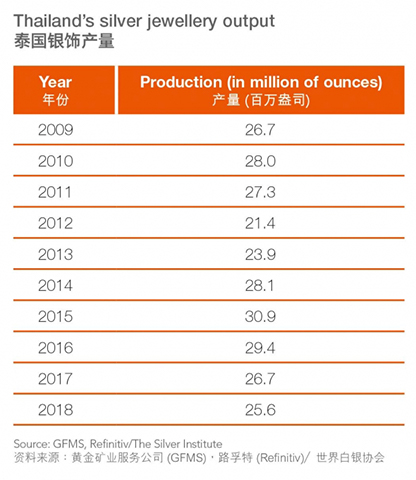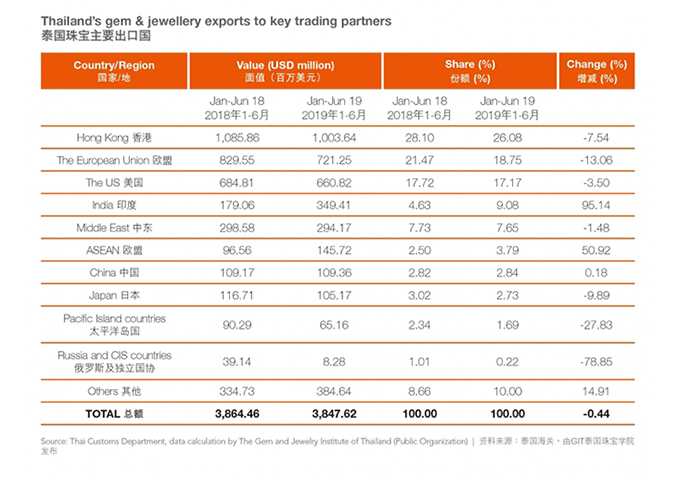Rich traditions have established Thailand as a world-class gem and jewellery manufacturing hub. Thanks to its resilience and perseverance, the country has successfully maintained its top market position.
Thailand is a treasure trove of delights. It attracts more visitors than any other country in Southeast Asia, with its enticing combination of alluring beaches, mist-covered mountains, inspiring temples, remarkable ancient ruins, delectable cuisine and, of course, the world-renowned hospitality of its people.
Also drawing worldwide acclaim are its actual treasures – coloured gemstones of all varieties, origins and qualities; jewellery ranging from luxury pieces and fine creations to high-quality silver options and fashion accessories; diamonds of all shapes and sizes; and a longstanding gem and jewellery industry that balances centuries of manufacturing techniques and expertise with the agility of design, production and business required to satisfy the buyers of today.
Here Thailand rakes in the superlatives. It boasts exceptional craftsmanship drawn from centuries of honing traditional techniques. It is the world’s largest exporter of silver jewellery to the US, accounting for one-third of that market’s foreign intake. It is a premier manufacturing centre for coloured gemstones, particularly rubies and sapphires. And it supports its gem and jewellery industry with a full complement of services, from world-class gemmological laboratories/institutes, convenient jewellery districts and consumer retail programmes to favourable trade policies and tax-free manufacturing zones.
The craft of tradition
Decades of mining and gemstone-cutting tradition yield a thriving coloured stone industry with highly skilled cutters, polishers and heat-treatment specialists. Their wide production of gem assortments in all sizes, shapes, qualities and origins at fair prices and in superior cuts attract jewellery manufacturers, designers, retailers, collectors and admirers from the world over.
Along with this expertise in heat treatment and cutting of coloured gemstones, Thailand has become a major player in the jewellery sector. For years, the nation has served as a manufacturing centre for some of the world’s well-known luxury brands, as well as many smaller companies and designers – both local and foreign – who appreciate fine craftsmanship and lower labour costs. These pieces are mainly crafted in gold, diamonds and gemstones, but the nation is also the world’s second largest producer of silver jewellery, just behind India.
The region of Chiang Mai is famous for its silverware and silver jewellery, with a distinct style that blends history with various traditions. Contemporary silver jewellery encompasses plain silver designs and those incorporating an array of gemstones (both precious and not) and minerals as well as synthetic stones at all price points. Given Thailand’s silversmithing background, design expertise and competitive prices, the main market for its silver jewellery is the US. Jewellery giant Pandora, which has extensive manufacturing facilities in the country and still outsources some production to local factories, is Thailand’s largest exporter of silver jewellery.
Craftsmanship lies at the very heart of what makes Thailand a manufacturing powerhouse. This undeniable advantage is celebrated in the country’s recent “Thailand’s Magic Hands” campaign.
Launched by the Department of International Trade Promotion (DITP), Ministry of Commerce, the global campaign reiterates the strengths of the country’s gem and jewellery industry at the international level by connecting the spirit of jewellery making to the traditional way of life and advanced skills of making intricate creations. By showcasing the uniqueness of Thailand’s gem and jewellery products that have been made by the country’s talented craftspeople and its new generation of designers, the campaign is set to increase awareness among international audiences as well as boost the sector’s exports.
Jewellery community
Gems and jewellery rank high in Thailand’s export priorities. The sector is the country’s third most important export category, accounting for a 5.89 percent share of the country’s gross exports from January to June 2019, according to latest official figures. No wonder then that it has sprouted equally important communities and related infrastructure.
As added support – and to complement Thailand as a world hub for treating and cutting gems and crafting high-quality, well-designed jewellery – a number of internationally recognised testing and grading facilities and gemmology schools have emerged or set up shop in the country. These include the Asian Institute of Gemological Sciences (AIGS), the Gemological Institute of America (GIA), the International Gemological Institute (IGI), Inter Gem Laboratory (IGL) and ICA GemLab.
Probably the most important player in the lab grading and educational sphere is The Gem and Jewelry Institute of Thailand (Public Organization) or GIT, under the supervision of the Ministry of Commerce. This governmental body includes one of the world’s leading gemmological laboratories, and is a member of the Laboratory Manual Harmonization Committee (LMHC), made up of the world’s seven leading gem laboratories. GIT’s responsibilities include nearly all aspects of the gem and jewellery industry in Thailand, including research, training and promotion.
Because of its economic importance to the nation, the gem and jewellery industry enjoys resolute support from the government. The DITP ensures the industry thrives by marketing its various sectors to bolster Thailand’s reputation as a gem and jewellery hub. Incentive measures regarding taxation and finance, along with reduced regulations are intended to encourage trading. These include a number of tax-free zones, such as Gemopolis on the outskirts of Bangkok. Established in 1990, it houses production facilities where foreign companies can benefit from a strong infrastructure, easy access to raw material suppliers and a highly skilled workforce.
On the trade side is the Thai Gem & Jewelry Traders Association (TGJTA), founded in 1976, currently with 1,513 members. Embraced by both the public and private sectors of the industry, the TGJTA works to assist and uplift the sector and promote Thailand as one of the world’s most important gem and jewellery centres.
Export prowess
All of these efforts seem to be paying off. Despite the uncertain global economic situation, the Thai gem and jewellery industry – which employs 1.3 million people – is doing well.
DITP Deputy Director-General Vannaporn Ketudat explains that exports of gems and jewellery from January to June 2019 were valued at more than US$7.2 billion, an increase of 15.2 percent compared to the same period last year. Product sectors that are still expanding include gemstones and pearls, jewellery made of precious metals and imitation jewellery. Major export markets are Hong Kong, the US, India, Germany and Switzerland. For 2019, the DITP is targeting an increase of at least 1 percent in gem and jewellery exports, despite the trade wars that threaten its main trading partners.
According to GIT analysis, official January to June 2019 export figures indicate declines in gold and jewellery exports but a boost in international demand for the country’s polished precious and semiprecious stones.
Thailand’s deliveries to leading market/region Hong Kong fell by 7.57 percent in the first half of the year because of decreases in polished diamond and gold jewellery export value, GIT reports. Overall exports to the European Union also shrank 13.06 percent on the back of declines in Germany’s and Belgium’s intake of Thai silver jewellery and polished diamonds respectively. Exports to the UK though grew 14.78 percent, thanks to increased demand for both gold and silver jewellery.
Exports to India grew a staggering 95.14 percent. According to GIT, most of these were semi-raw and raw materials such as polished diamonds, rough diamonds and silver, which are used to manufacture finished products for domestic distribution and re-export. Deliveries to ASEAN likewise ballooned due to strong increases in exports to Singapore (waste and scrap of precious metals and imitation jewellery respectively), Vietnam (synthetic stones, silver and polished diamonds) and Cambodia (polished diamonds).
Thailand’s commitment to excellence extends beyond the mere trade of gems and jewellery. The country seeks to accommodate current market demand for greater transparency and sustainability.
TGJTA Vice President Anthony Brooke points to the growing global trend of consumers looking for gems and jewellery produced in a socially responsible manner, including ethical sourcing of the raw materials, both gems and precious metals. This is a message that the Thai industry is taking very much to heart.
Brooke adds that the TGJTA, along with other organisations in Thailand, will continue to work closely with the World Jewellery Confederation (CIBJO) and the Responsible Jewellery Council (RJC) to assist its members to make the necessary changes and thus ensure that Thailand retains its position as a world hub for the gem and jewellery industry.















